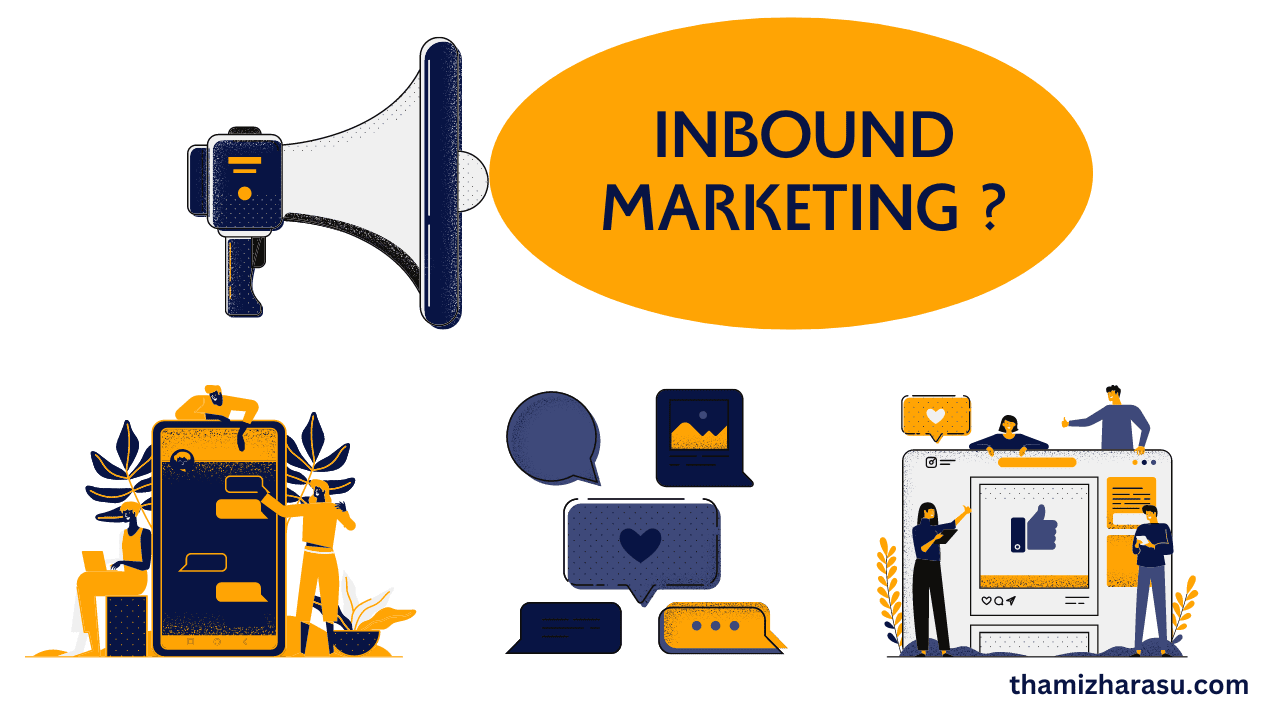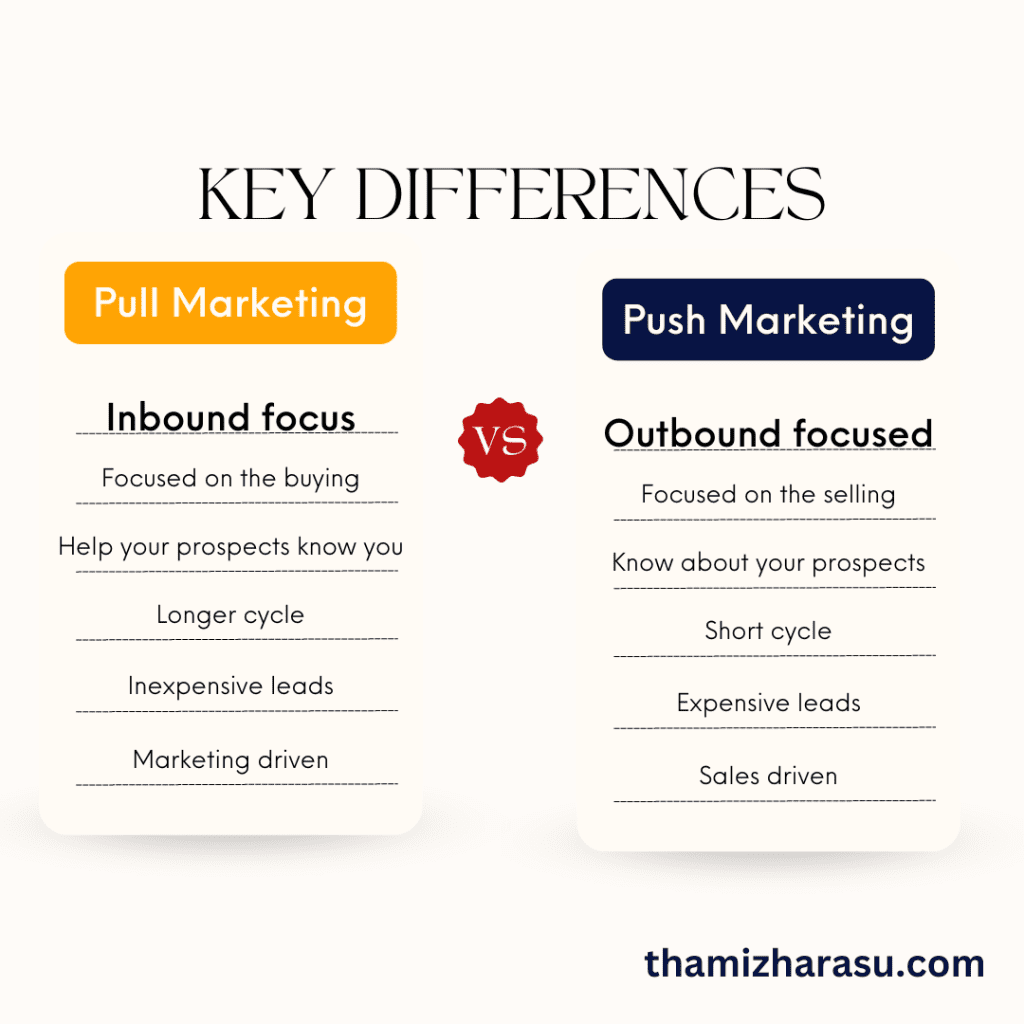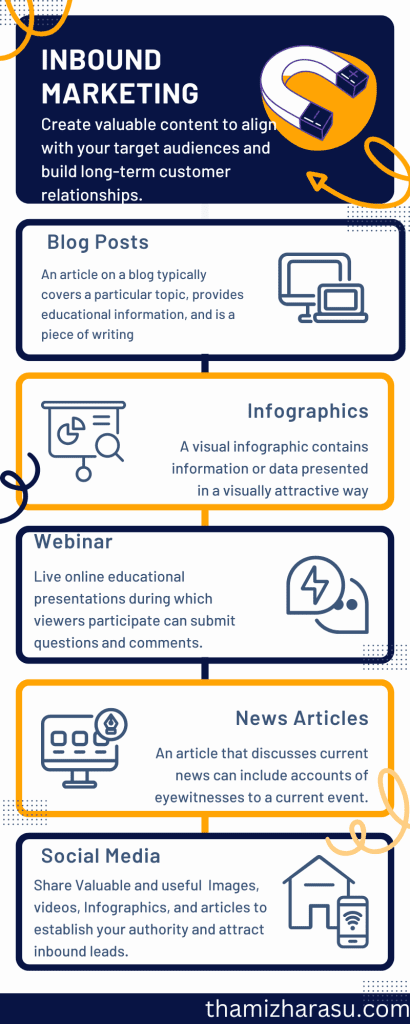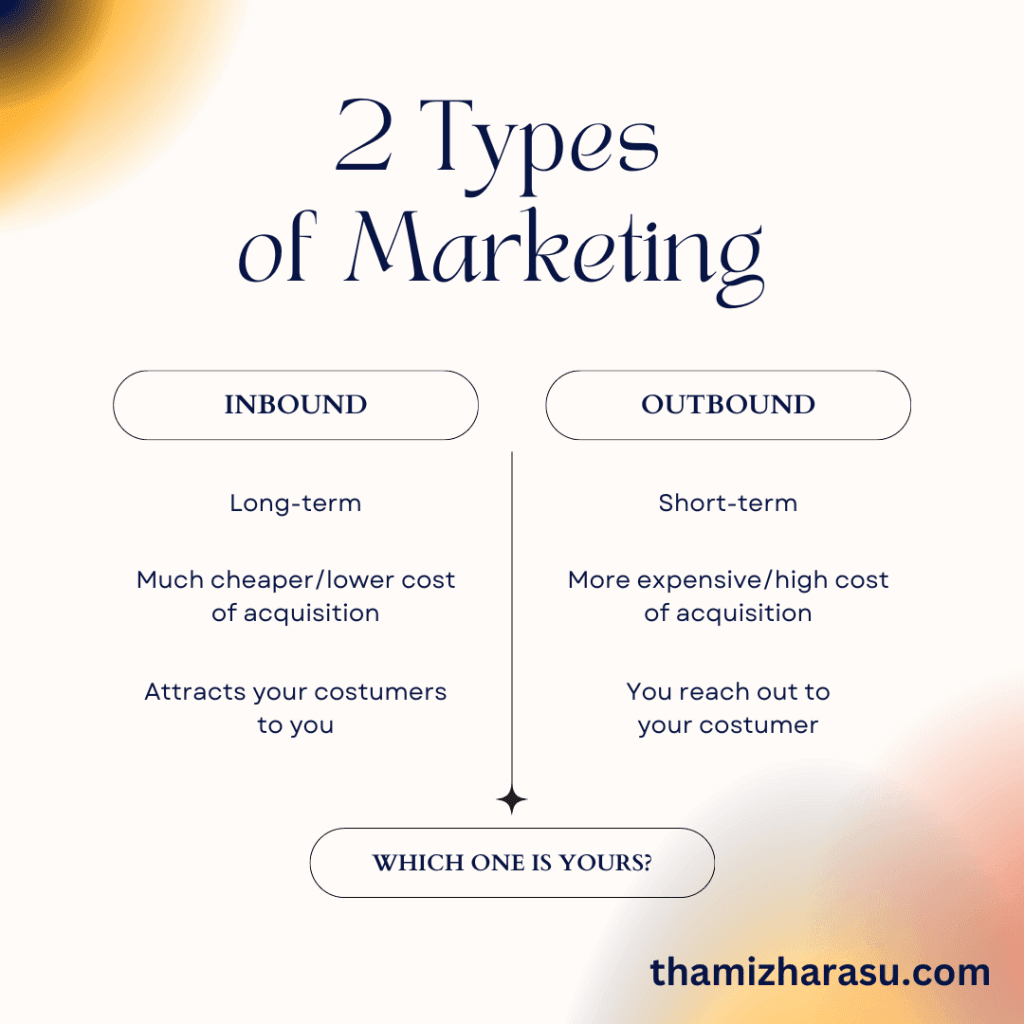- 05/01/2023
- Posted by: Thamizharasu Gopalsamy
- Categories: Marketing, Sales

Have you ever wondered what it takes to have a successful inbound marketing campaign? From understanding the basics of inbound marketing to leveraging the best tools and tactics, this article will discuss everything you need to know about crafting an effective inbound strategy. Discover how to get the most out of your inbound campaigns today!
Introduction to Inbound Marketing
Inbound marketing is a term that was coined by HubSpot CEO Brian Halligan in 2005. It’s a marketing strategy that focuses on getting found by customers through search engines, social media, and other online channels. Inbound Marketing is the process of attracting strangers to your website or blog, converting them into leads, and then nurturing those leads into customers.
The goal of inbound marketing is to attract strangers and turn them into customers and advocates for your business. The first step in the process is getting found by potential customers through SEO, social media, and other online channels. Once you’ve been found, you need to convert those strangers into leads with compelling offers like ebooks, webinars, free trials, etc. Lastly, you need to nurture those leads into customers with targeted email campaigns, workflows, and lead scoring.
In order to be successful with inbound marketing, it’s important to have a plan and be strategic about your execution. That’s why we’ve put together this guide on inbound marketing strategies. By following these tips, you’ll be able to get the most out of your inbound campaigns and attract more leads and customers for your business.
What Are the Benefits of Inbound Marketing?
Inbound marketing is a great way to get the most out of your marketing campaigns. By aligning your content and strategies with the needs and interests of your target audience, you can attract more qualified leads and convert them into customers.
Inbound marketing can help you:
Generate more leads: By creating valuable content that appeals to your target audience, you can attract more visitors to your website and generate more leads.
Convert more leads into customers: Once you’ve captured a lead’s attention, it’s important to nurture them through the sales funnel with relevant and targeted content. This will increase the chances of converting them into paying customers.
Save money: Inbound marketing is a cost-effective way to generate leads and customers since you’re not paying for advertising space or airtime. Instead, you’re investing in creating quality content that will attract the right people to your business.
Inbound marketing is an effective way to reach your target market and grow your business. By creating valuable content and aligning your strategies with the needs of your audience, you can generate more leads and convert them into customers.
How To Develop a Successful Inbound Strategy
In order to develop a successful inbound strategy, there are a few key things you need to keep in mind. First and foremost, you need to have a clear understanding of your target audience and what they’re looking for. Once you know this, you can begin creating content that is relevant and useful to them.
It’s also important to promote your content in the right places. This means getting involved in online communities where your target audience is active, as well as using social media and other online channels to get the word out.
Finally, don’t forget to measure your results so that you can continually improve your inbound strategy over time. By tracking your leads, website traffic, and conversions, you’ll be able to see what’s working and make necessary adjustments.

Inbound Marketing Plan
The first step in any inbound marketing campaign is to develop a plan. This plan should include your goals, target audience, and the strategies you’ll use to reach them.
Your goals will guide the overall direction of your campaign. What are you trying to achieve? More website visitors? More leads? More sales? Once you know your goal, you can develop a strategy to achieve it.
Your target audience is who you’re trying to reach with your campaign. Who are they? What do they care about? What are their pain points? Answering these questions will help you develop messaging that resonates with them.
Finally, you need to choose the right strategies to reach your target audience. Inbound marketing includes a variety of tactics, from content marketing and SEO to social media and email marketing. Pick the ones that will work best for your business and your budget.
Developing an inbound marketing plan may seem like a lot of work, but it’s essential for ensuring your campaign is successful. By taking the time to develop a plan upfront, you’ll be able to save time and money in the long run.
Content Types That Work Best with an Inbound Strategy
There are a few key content types that work best with an inbound strategy. They are:
1. Blog posts
2. eBooks and Whitepapers
3. Case studies
4. Infographics
5. How-to guides
Each of these content types serves a different purpose and can help you achieve different goals with your inbound strategy.
Blog posts are great for attracting new website visitors and providing them with valuable information about your industry. If you can produce high-quality, informative blog posts on a regular basis, you’ll be able to drive more traffic to your website and generate more leads.
eBooks and whitepapers are great lead-generation tools. They offer website visitors something of value in exchange for their contact information. Once you have a visitor’s contact information, you can begin nurturing them through the sales process with targeted emails and other content.
Case studies are another great way to generate leads and build trust with potential customers. They show potential customers how you’ve helped others solve similar problems to the ones they’re facing.
Infographics are a visually appealing way to share data and statistics about your industry or product. They’re easy to consume and can be shared widely on social media, which helps increase brand awareness and drive traffic back to your website.
Lastly, how-to guides provide the information your target audiences are looking for the how to use certain products and services. if their problem is solved using your how-to guide This helps build confidence that you can also help them solve their problem.

Tips for Optimizing Your Landing Pages
1. Keep your landing pages focused on a single conversion goal.
Don’t try to cram too much information onto your landing pages. Keep them focused on a single conversion goal, such as subscribing to your email list or downloading a white paper. The more focused your landing page is, the higher your conversion rate will be.
2. Use strong calls to action.
Your call-to-action (CTA) is the most important element on your landing page. Make sure it’s clear, concise, and stands out from the rest of the page. Use strong verbs that instill a sense of urgency, such as ‘download now’ or ‘sign up today.’
3. Include social proof.
Include testimonials, customer reviews, and social media buttons on your landing pages to provide social proof and increase trustworthiness. This will help convince visitors that they should take action on your CTA.
4. Optimize for mobile devices.
With more people using mobile devices to surf the web, it’s important to make sure your landing pages are optimized for smaller screens. This means keeping your design simple and easy to navigate and avoiding Flash animations or other elements that may not load properly on mobile devices.
Utilizing Automation in Your Inbound Campaigns
Utilizing automation in your inbound campaigns can save you a lot of time and energy. By automating your campaigns, you can focus on other aspects of your business while still driving traffic and generating leads. Automation also allows you to track results and ROI more effectively.
Some common ways to automate your inbound campaigns include:
–Automated email marketing: Sending automated emails to your list can help you stay in touch with leads without having to manually send each email yourself. You can set up an automated email campaign using software like MailChimp or Constant Contact.
–Social media automation: Automating your social media posts can help you save time and ensure that your content is being seen by your target audience. There are many different social media automation tools available, such as Hootsuite and Buffer.
–Paid advertising: If you’re running paid ads as part of your inbound marketing strategy, you can use automation to streamline the process. Google AdWords and Facebook Ads both offer options for automated ad campaigns.
Measuring the Results of Your Inbound Campaigns
The goal of any inbound marketing campaign is to generate more leads and conversions for your business. But how do you know if your campaign is actually working?
There are a few key metrics you can track to measure the results of your inbound campaigns:
1. Website traffic: This is the number of visitors coming to your website from your inbound marketing efforts. You can track this by looking at your website analytics. Look for an increase in overall traffic as well as traffic from specific channels, such as email or social media.
2. Lead generation: This is the number of new leads that you’re generating from your inbound marketing campaigns. You can track this by looking at your lead capture forms and seeing how many new leads are coming in each month.
3. Conversion rate: This is the percentage of visitors who are taking a desired action, such as filling out a form or making a purchase. You can track this by looking at your website analytics and seeing how many people are completing desired actions.
4. ROI: This stands for return on investment, and it measures how much money you’re making for every dollar you’re spending on your inbound marketing campaigns. To calculate this, simply divide your total revenue by your total marketing costs.
By tracking these key metrics, you’ll be able to see how effective your inbound marketing campaigns are and make necessary adjustments to improve results.
Tactics For Each Stage Of The Buyer’s Journey
There are three main stages in the buyer’s journey: awareness, consideration, and decision. Each stage requires different marketing tactics to be most effective.
In the awareness stage, buyers are just becoming aware of their problems or needs. They are not yet looking for solutions or vendors. The best marketing tactic for this stage is content marketing. You want to create content that educates buyers about their problems and raises awareness of your brand as a potential solution.
In the consideration stage, buyers have recognized their problems and are now actively searching for solutions. They are comparing different options and evaluating which one is the best fit for their needs. The best marketing tactic for this stage is lead nurturing. You want to provide helpful resources and information to help guide buyers toward your product or service as the best solution.
Finally, in the decision stage, buyers have narrowed down their options and are ready to choose a vendor. They are looking for reassurance that they are making the right choice. The best marketing tactic for this stage is sales enablement. You want to provide materials like case studies and demo videos that give buyers confidence in your product or service as the right solution for them.
Alternatives to Inbound Marketing
Inbound marketing is not the only way to market your business. There are many other options available, each with its own set of pros and cons.
Some common alternatives to inbound marketing include:
· Outbound marketing: This is the traditional form of marketing that involves things like television commercials, print ads, and cold-calling. Outbound marketing can be effective, but it can also be expensive and time-consuming.
· Social media marketing: This is a form of inbound marketing that uses social media platforms like Facebook, Twitter, and LinkedIn to connect with potential customers. Social media marketing can be very effective, but it requires a lot of time and effort to build up a following.
· Content marketing: This is a form of inbound marketing that focuses on creating and distributing high-quality content that will attract attention and interest from potential customers. Content marketing can be very effective, but it takes time to produce quality content.
· Search engine optimization: This is a form of inbound marketing that focuses on improving your website’s ranking in search engine results pages. SEO can be effective, but it takes time and effort to improve your ranking.
Each of these alternatives has its own set of pros and cons, so you’ll need to decide which one is right for your business. Inbound marketing can be an effective strategy, but it’s not the only option available.

Conclusion
Inbound marketing strategies are essential for businesses to reach their goals. By utilizing a combination of content creation, social media outreach, and SEO optimization techniques, you can maximize the success of your inbound campaigns and drive customers to your business. With a little bit of planning and effort, you’ll be able to make sure that each campaign is more successful than the last one. Make sure that you use all available resources so that your campaigns will reach as many potential customers as possible; this will help ensure maximum return on investment for your inbound efforts.
Leave a Reply
You must be logged in to post a comment.
